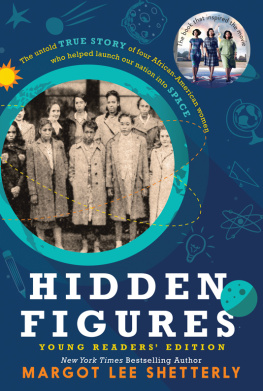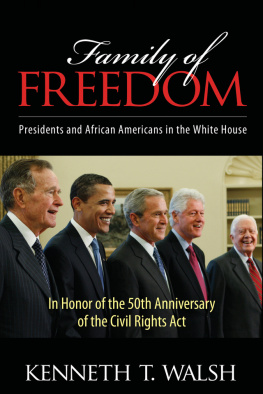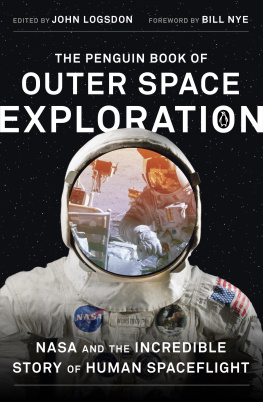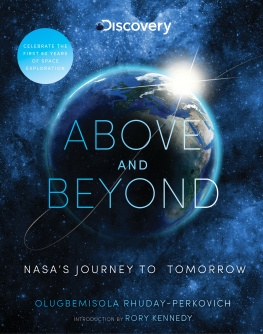We Could Not Fail
The First African Americans in the Space Program
RICHARD PAUL & STEVEN MOSS

University of Texas Press
AUSTIN
Copyright 2015 by Richard Paul and Steven Moss
All rights reserved
First edition, 2015
Requests for permission to reproduce material from this work should be sent to:
Permissions
University of Texas Press
P.O. Box 7819
Austin, TX 78713-7819
http://utpress.utexas.edu/index.php/rp-form
LIBRARY OF CONGRESS CATALOGING-IN-PUBLICATION DATA
Paul, Richard, 1959
We could not fail : the first African Americans in the space program / by Richard Paul and Steven Moss. First edition.
pages cm
Includes bibliographical references and index.
ISBN 978-0-292-77249-6 (cloth : alk. paper)
1. United States. National Aeronautics and Space AdministrationOfficials and employeesBiography 2. African American professional employeesBiography. 3. African American engineersBiography. 4. African American astronautsBiography. 5. United States. National Aeronautics and Space AdministrationOfficials and employeesHistory. 6. United States. National Aeronautics and Space AdministrationRules and practiceHistory. 7. Discrimination in employmentUnited StatesHistory20th century. 8. Race discriminationUnited StatesHistory20th century. I. Moss, Steven, 1962 II. Title. III. Title: First African Americans in the Space Program.
TL521.312.P39 2015
629.4092'396073dc23
2014030513
doi:10.7560/772496
ISBN: 978-0-292-77250-2 (library e-book)
ISBN: 978-0-292-77251-9 (individual e-book)
For Renee
RICHARD PAUL
With love to Lewis M., June, and Susan Moss
STEVEN MOSS
Contents
Preface
In 2008, the alumni office at Southern UniversityBaton Rouge helped us find Frank Williams, one of the first six black engineers at the National Aeronautics and Space Administration (NASA). We contacted him at his home in New Orleans and asked if he would sit for an interview. Yeah, sure, he said, though he quickly added, But you should talk to my daughter, and handed her the phone. Tarsia Williams was suspicious. Whats this about? she asked. We explained that we were producing a documentary and that her father was important to its story. There had been an article in the New York Times in 1964 that called him a social pioneer. He was one of the first African American engineers at NASA. She was aghast. He was what? She never knew there was an article in the New York Times. She never knew he was one of the first black engineers at NASA. She knew none of this. Now she was excited, but she was still concerned. My father is very sick, she said. Still, we arranged to conduct the interview, hiring a public radio producer in New Orleans to record Mr. Williamss half of the conversation.
When the day of the interview arrived, things did not go well. We asked the first question and all Frank Williams could do was cougha long painful spasm of coughing that went on for nearly half a minute. A second attempt was no better, or a third. After about five minutes, Tarsia came back on the line. She was in tears. Im so sorry, she said. I told you my father is very sick. He has mesothelioma, and I dont think youre going to be able to get him to do anything but this. And Im so sad, she continued. This was going to be my chance to hear all these stories. Im sorry, she said. The interview was over.
Several weeks later, she sent an e-mail. Her father had died. At the funeral, they invited people to come and speak if they had a story to share. She said a man named Morgan Watson got up. She had never met this man before, but he had all kinds of stories about her fatherabout being with Frank at college; about how they went together to NASA in Huntsville, Alabama; about how Frank had a car and all the guys would jump in it on weekends for road trips to Nashville or over to Atlanta. About crashing the whites-only lunch counter at a late-night bus station, and how Frank Williams stood up for their rights. She had never heard any of these stories. When Morgan Watson was done, Tarsia went up to himat her fathers funeraland said, You know, theres a man making a documentary about the first African Americans at NASA. Can I give him your number?
Introduction
On May 13, 1961, in its first issue after Alan Shepards historic Mercury mission, the New York Amsterdam News ran a front-page column by James Hicks that asked a question weighing on the minds of millions of Americans. If you are like me, the executive editor of the nations leading black newspaper said, as soon as you finished thrilling to the flight of the United Statess first man into outer space, your next thought was, I wonder if there were any Negroes who had anything to do with Commander Shepards flight? More than fifty years later, it is doubtful that many Americans could answer that question. It is safe to say that most know the name of the first black player in professional baseball and of the first person to integrate the University of Mississippi. Yet how many know the name of the first African American technical professional at Cape Canaveral, or of the man who integrated the Florida Institute of Technology? How many Americans know that the same man did both?
This book tells a story about a particular group of men who went to work either for the civilian or military space program during the period we now think of as the civil rights era, and the challenges they endured to accomplish what they did at the time and in the place that they did it. NASA tried desperately during this period to convince African Americans to move to Alabama, Florida, Mississippi, and Texas to work in the burgeoning space industry, but because of the Souths well-deserved reputation for discrimination and violence, many would not go. Looking at the stories of those who did offers an opportunity to see an alternative to the standard civil rights narrative of marches, sit-ins, and lawsuits brought by the U.S. Justice Department or the National Others did those things, sometimes right nearby, but these men instead realized a different kind of civil rights victoryquietly breaking through color barriers in education, employment, and politics to end up reviving and governing formerly defunct black towns, integrating southern colleges, earning PhDs and good jobs in advanced fields, and patenting important new inventions.
NASAs role in southern desegregation remains an unwritten and almost forgotten chapter in the history of the space program. There is much to say, however, about how the agency assisted portions of the South in stepping away from segregation as the Space Age promised to create a new society and shoot it off into the stars. The work NASA did as part of federal civil rights efforts, as well as the social consequences of its presence in the South, bridges two great American stories of the early 1960s. Technology and race are core issues in American history. From the cotton gin and slavery to the Space Age and civil rights they run together, and every once in a while they merge. This is the story of how these two principal themes of race and technology came together in the years before there was a Civil Rights Act, when civil rights laws and policies were just getting on their feet. During this time, many in the government were as committed to grounding Jim Crow as they were to landing a spacecraft on the Moon. This book tells that story in full and focuses on a group of brave and determined people who used the opening provided by this confluence to challenge a violent status quo.
Portrayals of the early space programs suggest they were an almost thoroughly white endeavor with no input from or impact on African Americans. NASA was German rocket scientists commanding legions of white American technicians, preparing and controlling capsules manned by jocular white fighter pilots and stoic white engineers. According to Konrad Dannenberg, a deputy to Wernher von Braun, the director of Marshall Space Flight Center (MSFC) in Alabama, I am Make no mistake, however. African Americans were there, and their presence had an impact.
Next page








